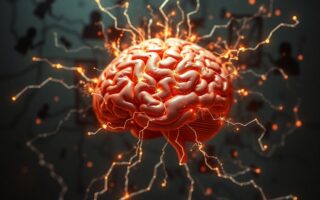Anxiety attacks, also known as panic attacks, can be an overwhelming and frightening experience. These intense episodes of fear and discomfort can strike without warning, leaving individuals feeling helpless and unsure of what’s happening. However, by recognizing the signs and symptoms of anxiety attacks, individuals can take steps to manage and cope with these episodes more effectively. In this comprehensive guide, we’ll explore the key signs of anxiety attacks and provide insights to help you navigate these challenging moments.
Physical Symptoms
Anxiety attacks often manifest with a range of physical symptoms that can be alarming and unsettling. One of the most common signs is a rapid heartbeat or palpitations, accompanied by a feeling of tightness or pressure in the chest. Individuals may also experience shortness of breath, as if they’re struggling to catch their breath. Other physical symptoms can include trembling or shaking, sweating, nausea, and dizziness or lightheadedness.
Psychological Symptoms
In addition to physical manifestations, anxiety attacks can bring about a range of psychological symptoms. A common experience is an overwhelming sense of fear or dread, often accompanied by a feeling of losing control or a sense of impending doom. Individuals may also experience racing thoughts, difficulty concentrating, or a feeling of disconnection from their surroundings, as if they’re detached from reality.
Cognitive Distortions
During an anxiety attack, cognitive distortions can amplify the intensity of the experience. These distorted thought patterns can include catastrophizing (assuming the worst-case scenario), overgeneralizing (viewing a single event as a never-ending pattern), and magnifying the perceived threat or danger. Recognizing and challenging these cognitive distortions can help individuals regain a sense of perspective and manage their anxiety more effectively.
Duration and Intensity
Anxiety attacks can vary in duration and intensity, but they typically reach their peak within 10 minutes and subside after 20-30 minutes. However, in some cases, the symptoms may persist for an extended period, leading to a prolonged state of anxiety or panic. It’s important to note that the intensity of an anxiety attack does not necessarily correlate with the severity of the underlying condition or the level of perceived threat.
Triggers and Risk Factors
While anxiety attacks can occur without an apparent trigger, certain situations or circumstances may increase the likelihood of experiencing one. Common triggers include stressful life events, exposure to phobic situations or objects, caffeine or substance use, and physical factors like certain medications or medical conditions. Additionally, individuals with a history of trauma, anxiety disorders, or panic disorders may be at a higher risk of experiencing anxiety attacks.
Coping Strategies
Recognizing the signs of an anxiety attack is the first step towards managing and coping with these episodes. During an attack, it’s essential to engage in grounding techniques, such as deep breathing exercises, progressive muscle relaxation, or mindfulness practices. Seeking support from loved ones or professionals can also be helpful in regaining a sense of calm and perspective.
Professional Treatment
While coping strategies can provide relief during an anxiety attack, seeking professional treatment is crucial for managing underlying anxiety disorders or persistent panic attacks. Cognitive-behavioral therapy (CBT), medication, or a combination of both can be highly effective in addressing the root causes of anxiety and equipping individuals with long-term management strategies.
Anxiety attacks can be a distressing and overwhelming experience, but by recognizing the signs and symptoms, individuals can take proactive steps to manage and cope with these episodes. Remember, seeking support from loved ones or professionals is essential, and with the right tools and strategies, it is possible to regain control and find a sense of calm amidst the storm of anxiety.














